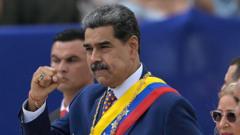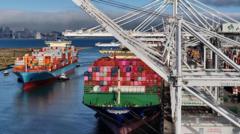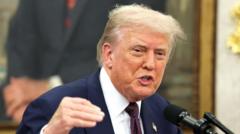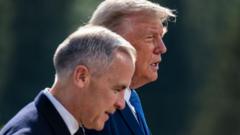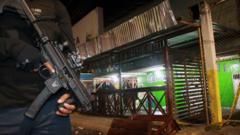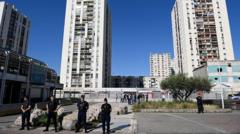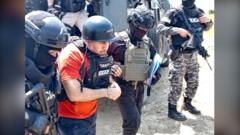As one of the largest drug syndicates globally, the Sinaloa Cartel is amidst escalating conflict fueled by government pressure and betrayal within its ranks. This article delves into the origins of its current turmoil, its criminal operations, and impacts on the broader drug market.
The Sinaloa Cartel: A Legacy of Chaos and Conflict

The Sinaloa Cartel: A Legacy of Chaos and Conflict
The notorious Sinaloa Cartel faces internal strife and government crackdowns threatening its existence.
The Sinaloa Cartel, a name synonymous with the global drug trade, is experiencing unprecedented turmoil and violence as internal and external pressures escalate. Once heralded for its operational prowess, the cartel is now grappling with fierce government crackdowns and betrayals from within its leadership, leading analysts to speculate on its potential dissolution.
Characterized by its role in the mass production of fentanyl and various other drugs, the Sinaloa Cartel has left a grave mark on the United States, contributing to an ongoing public health crisis. However, the cartel's current state is far from stable. Heavy financial losses, increased violence, and a power struggle are irrefutably shaking its foundations.
Recent developments indicate that a betrayal from the drug lord's son has ignited a vicious internal war, further complicating the cartel's efforts to maintain control over its operations. Simultaneously, both Mexican and United States authorities are ramping up enforcement measures, challenging the cartel's influence.
As authorities tighten the noose around its activities and rival gangs vie for power, the Sinaloa Cartel finds itself facing uncharted waters. The question remains: can the cartel survive this critical juncture, or will it become a casualty of its own greed and tumultuous internal dynamics? This ongoing saga continues to evolve, with major ramifications for the regional and global drug landscape.
Characterized by its role in the mass production of fentanyl and various other drugs, the Sinaloa Cartel has left a grave mark on the United States, contributing to an ongoing public health crisis. However, the cartel's current state is far from stable. Heavy financial losses, increased violence, and a power struggle are irrefutably shaking its foundations.
Recent developments indicate that a betrayal from the drug lord's son has ignited a vicious internal war, further complicating the cartel's efforts to maintain control over its operations. Simultaneously, both Mexican and United States authorities are ramping up enforcement measures, challenging the cartel's influence.
As authorities tighten the noose around its activities and rival gangs vie for power, the Sinaloa Cartel finds itself facing uncharted waters. The question remains: can the cartel survive this critical juncture, or will it become a casualty of its own greed and tumultuous internal dynamics? This ongoing saga continues to evolve, with major ramifications for the regional and global drug landscape.




